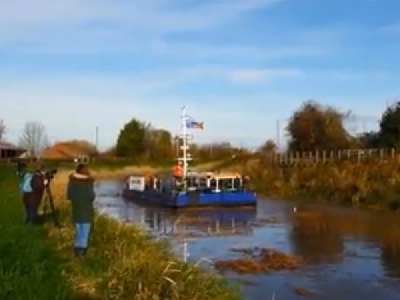
Posted on January 3, 2017
By Daniel Mumby, SomersetLive
2016 has been a difficult year in many ways, with celebrities dying, Brexit and the election of Donald Trump.
But even with the beating that Somerset took during Storm Angus in November, there is one crumb of comfort which we can take: the Levels and Moors did not flood.
In fact, since the disastrous floods of 2013/14 – when the village of Muchelney was cut off for ten weeks – there have been big strides forward in preventing future disasters of that magnitude.
But even with this success, this is not the time for the people at the Somerset Rivers Authority (SRA) to sit on their laurels. Nor should the government assume, because there has been no severe flooding since 2013/14, that Somerset no longer needs the money for flood prevention.
Here are three areas which need to be tackled head-on next year to keep flooding at bay on the Somerset Levels and Moors.
Long-term dredging plans
In November Somerset Live reported on new forms of dredging being trialled by the SRA on the River Parrett near Burrowbridge.
Working with the Parrett Internal Drainage Board and Dutch contractors Van Oord, both water injection dredging and agitation dredging were tried and tested, with more than 10,000 cubic meters of silt being removed.
Further tests are now being carried out upstream of Burrowbridge, in a different range of conditions, to see which would be the best option.
SRA chairman John Osman said: “Work done at the right times, in the right places, could be much cheaper, more effective, and better for the environment, local residents and farmers. Evidence so far suggests that we’re on the right lines – and no detrimental effects have been observed.
“But we need to keep getting the most useful experience and information that we can. So even though the dredging vessel has now gone, we’ll keep on monitoring throughout the winter.
“We need to understand not just the immediate effects of different dredging techniques, but what happens along the Parrett in the weeks and months afterwards.”
Both forms of dredging involve moving silt from the river bed into suspension, so that it is carried out to sea more rapidly.
The drainage board’s chief engineer Iain Sturdy said that water injection was “capable of moving large volumes of material from the bed of the channel very quickly indeed.”
While agitation dredging is slower, Mr Sturdy added that it “may be more precise”.
Whichever option the SRA ends up plumping for, it is vital that a sustainable and effective programme of regular dredging is put in place.
Secure funding for the Somerset Rivers Authority
The funding of the SRA has been a contentious matter from the outset. Since its creation, the body has been reliant on interim funding from central government and council tax rises to secure the £2.7M it needs annually to carry out all the necessary flood prevention work.
If Somerset’s future from flooding is ever going to be secure, this is a matter which has to be escalated and resolved with the utmost urgency.
In order to make the SRA a precepting body in its own right, legislation has to be passed by parliament – possibly as part of the Local Growth and Jobs Bill, which was fleetingly announced in the 2016 Queen’s Speech.
Mr Osman said in November that the long-term funding of the SRA was “not in doubt anymore” and that this legislation should come into effect by 2018.
He said: “Until this time, we have been given the power to use council tax to fund the authority – but there will not be another rise in council tax. We will keep up the pressure on government to deliver the help we need to protect Somerset.”
More capacity for the River Sowy and the King’s Sedgmoor Drain
The River Sowy is an artificial river, constructed in the 1960s and designed to work with the King’s Sedgmoor Drain to move rainwater and floodwater off the Levels and Moors more quickly and discharge it into the sea.
As part of the 20-Year Somerset Levels and Moors Flood Action Plan, the Environment Agency will be seeking to make both channels more resilient and increase their capacity.
The agency has submitted an application for a scheme which will cover 21km of the River Sowy and the King’s Sedgmoor Drain between Monk’s Leaze Clyce – just north-west of Langport – and Dunball.
A spokesperson said: “The primary objective of the proposed scheme is to reduce the risk, depth and duration of flood events that threaten property and infrastructure.
“The proposals seek to improve the options available for flood risk management by increasing the capacity of the River Sowy and parts of the KSD that form a flood relief channel for the River Parrett and its tributaries.”
This work will follow and compliment work at the A372 Beer Wall to increase channel capacity for the River Sowy and Langacre Rhyne, which both run under the main road between Bridgwater and Podimore.
Once completed, the capacity of the River Sowy will be increase by 40 per cent, allowing floodwater from the Rivers Parrett and Tone to drain much more quickly.
The channels will be widened to allow more water to pass through the systems at any given time, and much of the material excavated in this process will be used to repair the existing banks of the Sowy, with some raising in selected areas.
South Somerset District Council is expected to make a final decision on the scheme by February 7, enabling the work to be carried out during the summer to be ready for the following winter.
Source: SomersetLive





